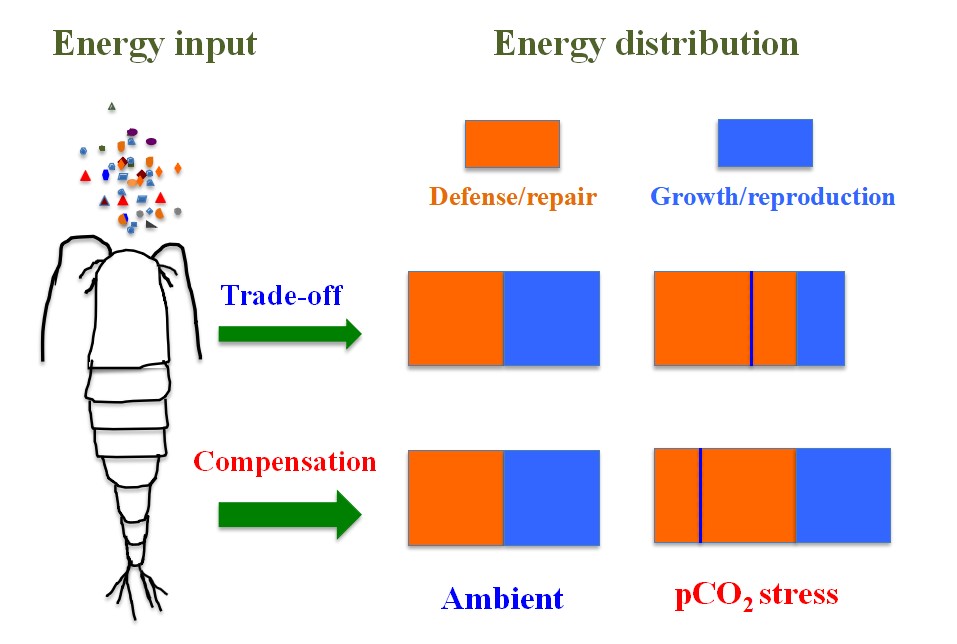作者:Wang, MH; Jeong, CB; Lee, YH; Lee, JS
影响因子:3.88
刊物名称:AQUATIC TOXICOLOGY
出版年份:2018
卷:196 页码:17-24
Ocean acidification (OA) leads to significant changes in seawater carbon chemistry, broadly affects marine organisms, and considered as a global threat to the fitness of marine ecosystems. Due to the crucial role of copepods in marine food webs of transferring energy from primary producers to higher trophic levels, numerous studies have been conducted to examine the impacts of OA on biological traits of copepods such as growth and reproduction. Under OA stress, the copepods demonstrated species-specific and stage-dependent responses. Notably, different populations of the same copepod species demonstrated different sensitivities to the increased pCO2. In copepods, the deleterious effects of OA are also reinforced by other naturally occurring co-stressors (e.g., thermal stress, food deprivation, and metal pollution). Given that most OA stress studies have focused on the effects of short-term exposure (shorter than a single generation), experiments using adults might have underestimated the damaging effects of OA and the long-term multigenerational exposure to multiple stressors (e.g., increased pCO2 and food shortage) will be required. Particularly, omics-based technologies (e.g., genomics, proteomics, and metabolomics) will be helpful to better understand the underlying processes behind biological responses (e.g., survival, development, and offspring production) at the mechanistic level which will improve our predictions of the responses of copepods to climate change stressors including OA.

Figure 1. Energetic trade-off hypothesis showing how compensatory response can potentially offset the negative impacts of pCO2 stress on copepods as exemplified by increased feeding under excess food provision. Open and closed stars indicate the trade-off for defense/repair and the compensation for growth/reproduction, respectively. Under tradeoff situation, the defense/repair takes higher proportion compared to the growth/reproduction energy distribution in a given 100% energy distribution condition. Under compensation situation, the OA (e.g. pCO2 stress) reinforces organism to take even higher energy distribution (> 100%) to compensate the stress to re-allocate the energy in defense/repair.

